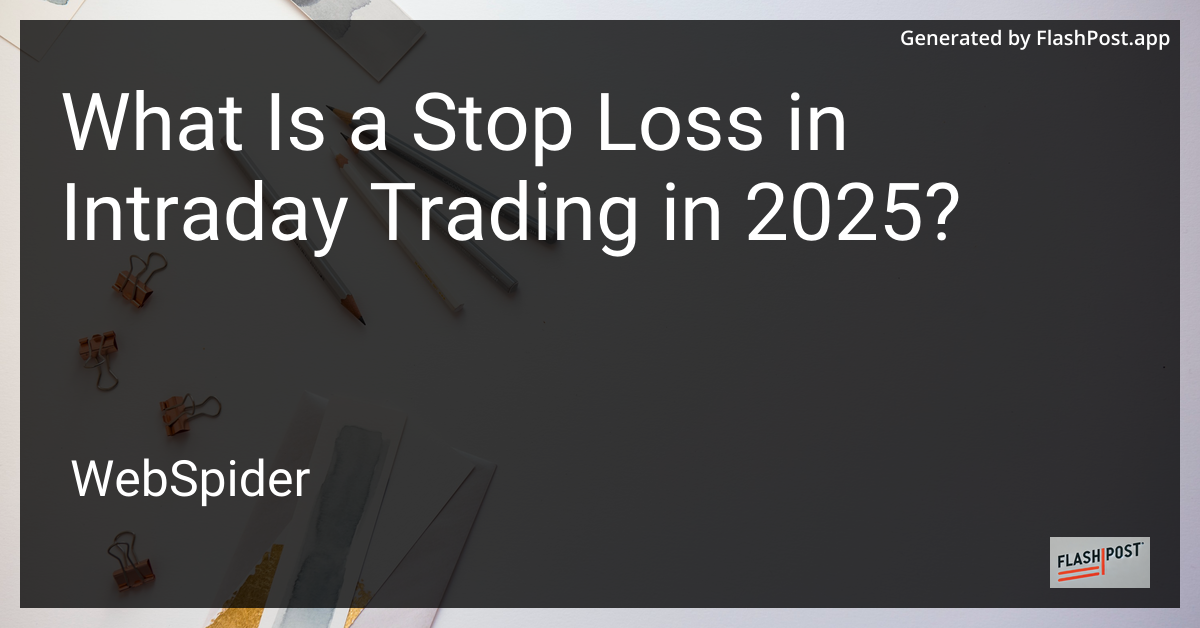
In the fast-paced world of day trading, traders require tools that help them manage risk effectively. A stop loss order is one such pivotal tool, particularly significant in the context of intraday trading. As we approach 2025, understanding the nuances of using stop loss orders becomes increasingly crucial for both novice and experienced traders.
Understanding Stop Loss Orders
A stop loss is a pre-determined level where a trader will exit a position in a security to prevent further losses. This strategic tool allows traders to limit their losses on a position, defining risk levels beforehand which is essential in volatile markets. In intraday trading, where rapid price movements are common, stop loss orders serve as a safety net.
The Importance of Stop Loss in Intraday Trading
-
Risk Management: Implementing a stop loss order is fundamental to managing risk. By setting a stop loss, traders automatically cut their losses when a trade goes against them, ensuring that a single trade doesn't wipe out their entire capital.
-
Emotional Discipline: Trading can often be driven by emotions. In the face of trading setbacks, traders may hold onto losing positions hoping for a reversal, which can lead to larger losses. A stop loss order enforces discipline, helping traders stick to their strategies without the influence of fear or greed.
-
Automated Trading: With advancements in trading technology, stop loss orders can now be automated, ensuring that traders with a strict trading schedule have peace of mind. Whether you are actively monitoring the markets or not, your trades are protected.
How to Set an Effective Stop Loss
Setting an effective stop loss involves aligning it with your overall trading strategy and risk tolerance. Here are some steps to consider:
-
Determine Your Risk Tolerance: Understand how much of your portfolio you are willing to risk on a single trade.
-
Technical Analysis: Use technical indicators and chart patterns to identify logical points for placing stop losses. Common methods include setting a stop loss at a recent low or high or using moving averages.
-
Volatility Considerations: Consider the security's volatility before setting a stop loss. High volatility stocks may require wider stops to avoid being stopped out prematurely.
Looking Forward: The Role of AI in Stop Loss Orders
As we venture into 2025, technology continues to reshape trading practices, and the integration of AI in stop loss orders is no exception. AI-enabled systems can analyze vast amounts of data, adjusting stop loss positions dynamically based on real-time market conditions. This shift can provide traders with enhanced precision and improved risk management.
In conclusion, the use of stop loss orders in intraday trading will remain a cornerstone strategy, essential for capital preservation and emotional discipline. As traders prepare for the trading landscape of 2025, embracing advanced stop loss techniques, driven by technology, will be crucial for maintaining an edge in the market.